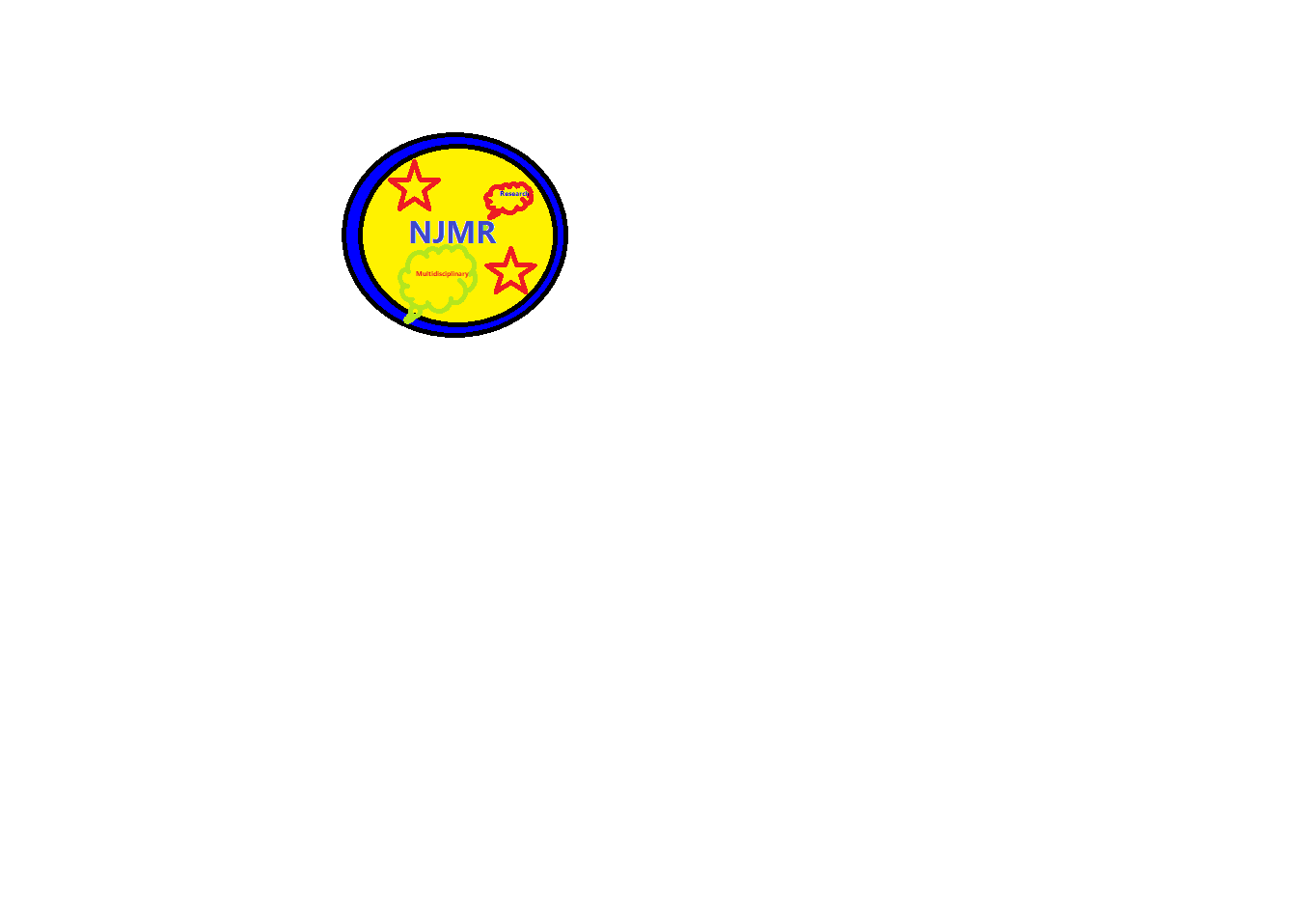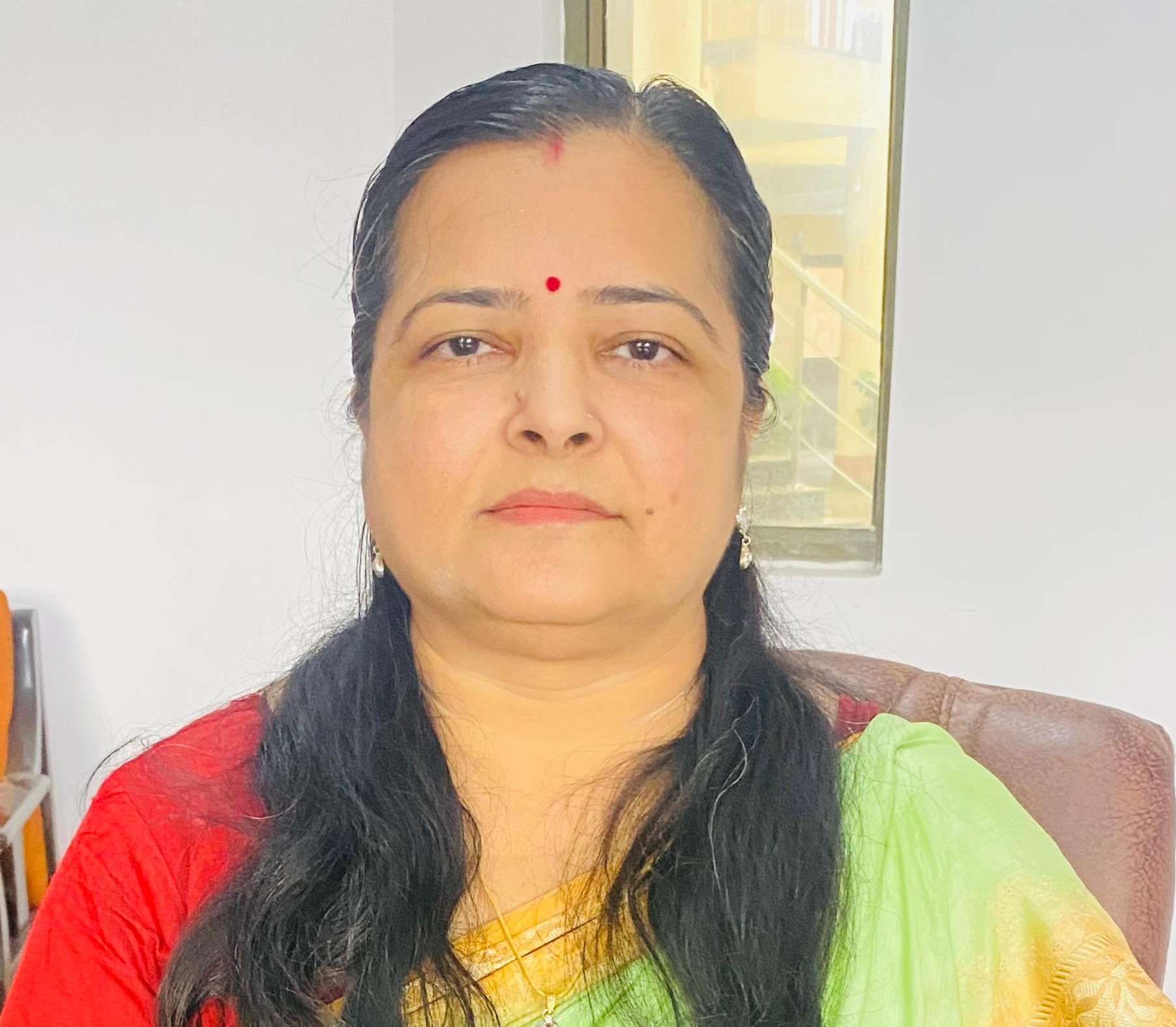Autophagy mechanism, regulation, functions, and disorders
Autophagy is a self-digesting mechanism responsible for removal of damaged organelles, malformed proteins during biosynthesis, and nonfunctional long-lived proteins by lysosome. Autophagy has been divided into three general types depending on the mechanism by which intracellular materials are delivered into lysosome for degradation that is, microautophagy, chaperone-mediated autophagy (CMA), and macroautophagy. In microautophagy cytoplasm material is sequestered through direct invagination to the lysosomal membrane. Whereas in CMA proteins flagged with pentapeptide motif (KFERQ) were selectively degraded through direct translocation into lysosome. Macroautophagy involves the formation of subcellular double-membrane-bound structures called autophagosomes that contain degradable contents of cytoplasm materials and deliver them into lysosomes for breakdown by lysosomal enzymes. The molecular mechanism of autophagy involves several conserved Atg (autophagy-related) proteins. Systems produce modified complexes Atg8-PE and Atg5-Atg12-Atg16 as autophagy regulators. Autophagy is activated in response to diverse stress and physiological conditions. For example, food deprivation, hyperthermia, and hypoxia are mediated by factors like insulin/IGF-1, m-TOR signaling, FOXO transcription factors, and chaperones. The perturbance in autophagy may lead to several types of cancers, myopathies, and neuromuscular disorders. Several autophagy inducers and inhibitors like 3-methyladenine (3-MA), bafilomycin A1, LY294002 (LY), and Velcade have been used to treat disease is an intense field of study.
Assessment of knowledge and attitude of adverse drug reactions among healthcare professionals in bangladesh
Adverse drug reactions have increased significantly in people as many new drugs have come to the market in the last two decades. This has not only economic consequences but also causes morbidity and mortality. In Bangladesh, some incidents happened related to drug problems and it took several lives. Spontaneous reporting of adverse drug reactions can primarily control this situation and healthcare professionals can play an immeasurable role. Therefore, this study was aimed to be conducted at seven different hospitals and diagnostic centers to find out the actual scenario of adverse drug reactions among the healthcare professionals in Bangladesh to make them aware of adverse drug reactions and the reporting system, and to know about their opinion towards adverse drug reactions. However, after evaluation of the questionnaires it was found that a large number of healthcare professionals were not aware of adverse drug reactions and pharmacovigilance, especially the nurses. It was found that 13.3% of nurses did not know about adverse drug reactions and 93.3% of them had not reported any reactions. Furthermore, many healthcare professionals did not show a positive attitude towards pharmacovigilance. If proper pharmacovigilance practice cannot be started, the nation will face serious economic and health-related problems.
 Mediterranean journal of pharmacy and pharmaceutical sciences
Mediterranean journal of pharmacy and pharmaceutical sciences
Declining clinical skills in medical education: a perspective on its causes and potential solutions0
Medical science has grown tremendously at a rapid rate over the recent past. This is especially true in the fields of diagnostics and therapeutics encompassing various diseases of all the systems of the human body including psychosomatic disorders. During the past three to four decades, precision in diagnostics has enormously improved due to invention of multiple imaging modalities such as computerized tomography (CT) scan, magnetic resonance imaging (MRI) scan, positron emission tomography scan, ultrasound scanguided studies, CT-guided diagnostic procedures, Doppler studies, arteriography, CT angiography, advanced needle biopsy procedures, histochemistry studies, tumor marker studies, as well as in the ongoing improvements in all diagnostic and therapeutic branches. The surgical advancements due to increasing use of key-hole surgery using scopes such as arthroscope, laparoscope, colonoscope, and bronchoscope have revolutionized the surgical treatments and made surgery safer, less time-consuming, less costly, and less risky with reduced post-operative morbidity. Cardiac catheterization, percutaneous cardiac angiography, angioplasty, and vascular surgery have made the procedures/ surgeries related to the heart and major vessels, much simpler, faster, and safer minimizing the need for big infrastructures or large operative teams.
Classic and alternative disinfection practices for preventing of hospital-acquired infections: a systemic review
Ultraviolet (UV) disinfection technologies are well-known tools for microbial prevention in indoor public places which are frequently employed for disinfecting air, surfaces, and water. Such technologies have drawn a great deal of interest due to its potential application, especially in the domain of healthcare. This article discusses the shortcomings of chemical disinfectants and analyzes the current research standing on the development of various types of UV disinfection technologies for their prospective usage in the healthcare industry. Furthermore, the article provides a thorough analysis and in-depth evaluation of the current antibacterial studies using UV lamps and light-emitting diodes (LEDs) for the treatment of frequently encountered pathogens associated with healthcare. According to the systematic review, UV-LEDs have shown to be a potential source for delivering disinfection which is equally efficient or more effective than traditionally used UV lamps. The findings also provide valuable considerations for potentially substituting conventional lamps with LEDs that would be less expensive, more efficient, more robust, non-fragile and safer. With greater effectiveness and advantages, UV-LEDs have shown to be the potential UV source that could fundamentally be able to transform the disinfection industry. Therefore, the study supports the employment of UV-LED technology as a better and workable approach for effective disinfection applications. The study also offers insightful information that will help to direct future studies in the domain of hygienic practices used in healthcare facilities.
Anticancer potential of furanocoumarins: mechanistic and therapeutic aspects
Cancer is one of the most extreme medical conditions in both developing and developed countries around the world, causing millions of deaths each year. Chemotherapy and radiotherapy are critical treatment approaches, but both have numerous adverse health effects. Furthermore, the resistance of cancerous cells to anticancer medication leads to treatment failure. The rising burden of cancer overall requires novel, efficacious treatment modalities. Natural medications offer feasible alternative options against malignancy in contrast to western medicines. Furanocoumarins’ defensive and restorative impacts have been observed in leukemia, glioma, breast, lung, renal, liver, colon, cervical, ovarian, and prostate malignancies. Experimental findings have shown that furanocoumarins activate multiple signalling pathways, leading to apoptosis, autophagy, antioxidant, antimetastatic, and cell cycle arrest in malignant cells. Additionally, furanocoumarins have been shown to have chemopreventive and chemotherapeutic synergistic potential when used in combination with other anticancer drugs. Here, we address different pathways which are activated by furanocoumarins and their therapeutic efficacy in various tumors. Ideally, this review will trigger interest in furanocoumarins and their potential efficacy and safety as cancer-lessening agents.
Air pollution, health outcomes, and environmental justice in the mid-atlantic state city: a public health lesson from a 15-year perspective (2005-2019)
The city that never sleeps, a vibrant tapestry of dense neighborhoods and relentless energy, has long grappled with the pervasive challenge of air pollution. The very dynamism that defines the city – its traffic, buildings, and industry – contributes to ambient concentrations of fine particulate matter (PM2.5) and ground-level ozone (O3), pollutants known to exact a heavy toll on public health. [1-3] An extended analysis of environmental health data from 2005 to 2019, meticulously compiled by the town Department of Health and Mental Hygiene (DOHMH), offers a crucial lens through which to view the city's journey: a narrative marked by significant public health victories interwoven with stark, persistent environmental injustices. [4] This fifteen-year period reveals not just the efficacy of targeted interventions but also the deeply entrenched disparities that continue to leave vulnerable communities uneasy. Thus, the aforementioned challenge provides a very important lesson to address similar problems around the globe, especially in the crowded urban areas.
Exploring the academic landscape: a critical analysis and review of the nepal journal of multidisciplinary research [njmr]
The establishment of the Nepal Journal of Multidisciplinary Research (NJMR) aimed to facilitate the exchange of knowledge among global scholars. Consequently, a thorough examination of NJMR's trajectory toward its objectives became essential. This investigation, conducted through systematic review methods, durations five years and encompasses 164 articles, including one special issue. Throughout this period, the journal exhibited growing interest across diverse areas of study, although a notable observation was the limited citations in many articles. The majority of contributions came from scholars in Nepal and India, covering a wide range of subjects. Notably, Tribhuvan University emerged as a leading contributor, particularly in the areas of software development and cultural practices, which received more citations. The predominant focus of the journal was on quantitative research; however, there is a recognized need to acknowledge and emphasize the value of qualitative findings. To enhance its academic standing, the Nepal Journal of Multidisciplinary Research [NJMR] could benefit from increased global awareness, engagement, and a more balanced approach to research methods. Gaining wider acceptance may involve fostering international collaboration and ensuring a more comprehensive representation of qualitative research within its publications. By addressing these aspects, the journal has the potential to elevate its academic impact and contribute more substantially to the global scholarly community.
Preparation and physicochemical and in-vitro evaluation of lomustine nanoparticles
In the present study nanoparticles of lomustine were fabricated using chitosan polymer crosslinked with different crosslinking agents like sodium tripolyphosphate and sodium hexametaphosphate. Different formulations of nanoparticles were prepared using different concentrations of crosslinking agents and polyethylene glycol 6000. The average particle size ranged between 112 nm to 942 nm. Zeta potential of nanoparticles ranged between 29.0 mV up to 56.0 mV. Encapsulation efficiency was variable from 58%-96%. The nanoparticles were solid spherical. In vitro drug release study was carried out in phosphate buffered saline solution pH 7.4 for 10 h. The analysis of regression values of Higuchi plot suggested diffusional mechanism and follows Fick's law of diffusion. Drug polymer interaction was absent as evidenced by FT-IR spectra and DSC thermograms. With polyethylene glycol inclusion shows interaction between lomustine and PEG. Cell viability assay (MTT Assay) showed that the lomustine nanoparticles were able to reduce the tumour cell proliferation and increased cell viability significantly (p< 0.05) as compared to pure drug in L 132 human lung cancer cell line
Budd-chiari syndrome in gaucher disease type iii in an adult libyan male: letter to the editor
Gaucher Disease (GD) is the most common lysosomal storage disorder. The prevalence of GD is approximately 1/100,000, and type III GD accounts for 5% of cases. [1] It is an autosomal recessive disease due to a GBA gene mutation, leading to glucocerebrosidase enzyme deficiency. [1,2] Gaucher disease (GD) is categorized into three types according to clinical presentation: [3] Type I, which is non-neuronopathic and most common, particularly among Ashkenazi Jews; Type II, which is acute neuronopathic and marked by significant neurological involvement and high mortality rates; and Type III, which is subacute neuronopathic, exhibiting both systemic and neurological symptoms. In this report, we discuss a 24-year-old man from Libya diagnosed with GD type III. His diagnosis was established at the age of one due to symptoms including pallor, poor appetite, and hepatosplenomegaly. Laboratory tests indicated a hemoglobin level of 5.6 g/dL, chitotriosidase activity of 18,742 μmol/L, and an angiotensin-converting enzyme level of 251 UI/L. Genetic analysis confirmed a homozygous L444P mutation. He underwent splenectomy at the age of three, and enzyme replacement therapy (ERT) was administered intermittently with regular follow-ups until 2011. In December 2023, the patient experienced two weeks of abdominal pain, distension, and fatigue. A physical examination revealed ascites, dilated abdominal veins, and an enlarged liver and spleen.
Cytodifferentiation of fundic part of glandular stomach in non descript breed of indian prenatal goat
Though the anatomy and physiology of the adult caprine (Capra hircus L.) stomach have been investigated extensively, the early development of the abomasum has not yet been fully elucidated. The glandular part of abomasum plays an important role in digestion of ingested food by action of gastric juices. Very few studies have been conducted so far regarding histogenesis of goat foetal abomasum in India. In the present study, we have investigated the embryonic and early foetal development of the goat, Capra hircus L. fundic abomasum. We collected 36 developing abomasum of healthy and normal embryos/foeti of goat and assigned them into three group viz. Gr. I (0-50 days of gestation), Gr. II (51-100 days of gestation) and Gr. III (101-150 days of gestation). Small pieces of tissues were processed by routine paraffin. The wall of glandular stomach, the fundic part, was composed of epithelium, pleuripotent blastemic tissue and serosa up to 44 days of gestation. Tunica muscularis became separable at 46 days of gestation. The epithelium was stratified type up to 50 days and gradually changed to pseudo-stratified columnar to simple columnar type from 76 days of gestation. Primary and secondary abomasal folds were observed at 51 and 76 days of gestation, respectively. Gastric pit, the fore runner of gastric gland was reported first at 70 days. The gland became branched tubular type at 145 days. The cells found in the mucosa of the abomasum were surface epithelial cells, chief cells, parietal cells, mucous neck cells and undifferentiated cells. Chief and parietal cell were observed at 76 days and mucous neck cells at 82 days of gestation. Reticular, collagen and elastic fibers came into sight at 38, 76 and 100 days of gestation, respectively. The present study is expected to supplement known data and knowledge regarding histogenesis of goat fetal abomasum and help in diagnosis and treatment of related congenital anomalies.
Association between antiepileptic drug side effects and medication adherence among libyan epilepsy patients
Treatment adherence is a critical component of epilepsy management. Antiepileptic drug side effects affect adherence and may result in the discontinuation of medication. This study aimed to investigate the association between antiepileptic drug side effects and medication adherence among Libyan patients with epilepsy while identifying predictors of adherence. A cross-sectional study was conducted at Tripoli University Hospital involving 200 adult epilepsy patients. Adherence was assessed via a self-report tool dichotomized as adherent/ non-adherent if patients stopped medication due to side effects. Side effects were evaluated using the Side Effects of Antiepileptic Drugs questionnaire. Logistic regression analyzed predictors of adherence, including antiepileptic drug use, therapy regimen, and side-effect profiles, with p<0.05 declared association. The overall adherence rate was 87.0%. Higher adherence was observed in older age groups, 95.8% in patients aged 51-60, 89.4% in married patients, and 91.0% in university-educated patients. Patients on monotherapy and those seizure-free in the preceding month demonstrated better adherence (88.4% and 93.0%, respectively). Valproate users had notably low adherence (52.6%) while carbamazepine and phenytoin users showed higher adherence (89.7% and 91.7%, respectively). Cognitive complaints significantly reduced adherence (76.1% vs. 79.6%), as did aggressive behavior (58.3% adherence). Logistic regression identified two independent predictors: patients on old-generation antiepileptic drugs had 2.7 times higher adherence (AOR=2.702, 95% CI: 1.168-6.249; p=0.02) while cognitive side effects reduced adherence by 86.4% (AOR=0.136, 95% CI: 0.031-0.596; p=0.008). Cognitive side effects predict non-adherence, necessitating routine monitoring. Paradoxically, older antiepileptic drugs correlated with better adherence. Integrating patient-reported metrics and addressing cognitive impacts could optimize epilepsy care, highlighting gaps in side-effect management and advocating personalized strategies in clinical settings.
 Mediterranean journal of pharmacy and pharmaceutical sciences
Mediterranean journal of pharmacy and pharmaceutical sciences
Evaluation of passive islanding detection methods for line to ground unsymmetrical fault in three phase microgrid systems
Distributed Generators (DGs) are incorporated in the power distribution systems to develop green energies in microgrids. Islanding is a challenging task in a microgrid. Different types of islanding methods, e.g. local and remote methods, have been developed for handling this task, with local methods being easier to implement, while remote methods are communication-based and costly. The local methods are classified as passive, active, and hybrid, out of which the passive methods are more simple and economical. In this paper, a passive islanding detection method is proposed to detect single line to ground fault. This fault is considered to represent the 60 to 70% of the total un-intentional faults of this category. The available passive methods cannot detect islanding at lower power mismatches as the variations in voltage and frequency fall within thresholding values. In this method, the voltage signals are first retrieved at the targeted DG output and then the phase angle is estimated. Finally, the phase angle is differentiated to get Rate Of Change Of Voltage Phase Angle (ROCOVPA) to detect islanding, and then it is compared with the Rate Of Change Of Frequency (ROCOF) at zero percent power mismatch. Simulation results depict that the ROCOVPA is more effective than ROCOF. The proposed method not only reduces detection time and NonDetection Zone (NDZ) but is also stable during non-islanding cases like load connection and disconnection to avoid nuisance tripping.
Role of human liver microsomes in in vitro metabolism of metamizole
Metamizole or Novalgin® is a widely used well tolerated analgesic drug which is however compromised by agranulocytosis as adverse effect. Subsequent to nonenzymatic hydrolysis, the primary metabolic step is N-demethylation of 4-methylaminoantipyrine (4-MAA) to 4-aminoantipyrine (4-AA). The aim of the present study was to identify the human cytochrome P-450 enzyme (CYP) mediating this reaction. This study identified the relevant CYP using virus expressed isolated human CYP, human liver microsomes and rat liver microsomes with chemical inhibition studies. The substrate of 4-methylaminantipyrine was employed at six different concentrations (25, 50, 100, 400, 800 and 1200 µmol per l) with varying concentrations of selective inhibitors of CYP1A2 (furafylline, fluvoxamine), CYP3A4 (ketoconazole), CYP2A6 (coumarin), CYP2D6 (quinidine), CYP2C19 (omeprazole, fluvoxamine, tranylcypromine), CYP2C9 (sulphaphenazole) and CYP1A1 (alpha-naphthoflavone). 4-MAA and 4-AA were analyzed by HPLC and enzyme kinetic parameters (Km and Vmax) were determined by regression (Sigma plot 9.0). The N-demethylation of 4-MAA by microsomes prepared from baculovirus expressing human CYP was pronounced with CYP2C19. Intrinsic clearance of the most active enzymes were 0.092, 0.027 and 0.026 for the CYP enzymes 2C19, 2D6 and 1A2, respectively. Metabolism by human liver microsomes was strongly inhibited by fluvoxamin, omeprazole and tranylcypromine (IC50 of 0.07, 0.07 and 0.18, respectively) but with coumarin, sulphaphenazole, ketoconazole, moclobemid, quinidine alpha-naphthoflavone and furafylline were 0.79, 1.20, 1.36, 1.44, 3.46, 4.68 and 8.41, respectively. The enzyme CYP2C19 apparently has an important role in N-demethylation of 4-methylaminoantipyrine which should be further analyzed in clinical studies and which may also be interesting concerning the agranulocytosis.
 Mediterranean journal of pharmacy and pharmaceutical sciences
Mediterranean journal of pharmacy and pharmaceutical sciences
Survey on advanced data communication
Brilliant Grid is intended to incorporate progressed correspondence/organizing innovations into electrical power frameworks to make them ''more intelligent''. The current circumstance is that a large portion of the power outages and voltage lists could be forestalled in the event that we have better and quicker specialized gadgets and advancements for the electrical matrix. To make the flow electrical force lattice a Smart Grid, the plan and execution of another correspondence framework for the lattice are two significant fields of examination. Be that as it may, Brilliant Grid projects have just been proposed as of late and a couple of recommendations for forward-looking necessities and starting exploration work have been offered in this field. No efficient audits of correspondence/organizing in Smart Grids have been led at this point. In this manner, we direct an orderly survey of correspondence/organizing innovations in Smart Grid in this paper, including correspondence/organizing engineering, distinctive correspondence innovations that would be utilized into this design, nature of administration (QoS), upgrading the use of resources, control and the board, and so forth.
Diversity status of beneficial microorganisms in heavy metal polluted tannery effluent treatment area in dindugal, tamil nadu
Industrial waste is one of the most essential sources of contamination in the surface environment. Among different industries, tannery industry releases huge amount of pollutants into the ecosystem. Long term disposal of the tannery wastes has resulted in wide contamination of agricultural land and water sources in different parts of India. An attempt was made to study the diversity status of different microbial organisms in tannery effluent treated samples in Dindugal, Tamil Nadu. It was found that Electrical Conductivity (EC) and heavy metal contents were higher and population density of different beneficial microbes found better. Among different microbes isolated, phosphate solubilizing microbes (PSB) was found maximum which is followed by fungi and actinomycetes. The population density of non-symbiotic and symbiotic nitrogen fixers were found to be low in numbers when compared to other samples screened. Similarly, occurrence and distribution of AM fungal spores were also found low in heavy metal polluted samples as compared to the samples collected from non-polluted outside tannery effluent treatment area. Among different Arbuscular Mycorrhizal (AM) fungi, Glomus species was found to be dominant in the samples collected from outside tannery effluent treatment area as compared to tannery effluent samples.
Socio-economic upliftment of the rural poor in gobichettipalayam – a case of successful implementation of mgnrega act
Mahatma Gandhi National Rural Employment Guarantee Act (MGNREGA), with a mandate to provide at least hundred days of guaranteed wage employment in a financial year to every rural household whose members above the age of eighteen years volunteer to do unskilled manual work. The main focus of the act is to facilitate the social protection for the people living in rural India by providing employment opportunities and therefore contributing towards the overall development of the local people. The present study was attempted to figure out the impact of MGNREGA on overall economic and social development of beneficiaries in Gobichettipalayam, Erode district of Tamilnadu.. The results found the MGNREGA has significantly improved their social and economic well-being. The study also has highlighted on the fact that agricultural wages have gone up after the introduction on MGNREGA scheme in the current area.
The effect of using dettol, salt and hot tap water in elimination of toothbrush contamination
Regularly used toothbrushes can be heavily contaminated with microorganisms, while inappropriate storage may increase the microbial load on these toothbrushes. Toothbrushes Microbial contamination can help to transmit many diseases, especially for people with mouth and/or Gum problems. This study aims to find the easiest and most available way to sterile toothbrushes at home. 24 adult volunteers were divided into four groups, the first three groups were asked to sterilize their toothbrushes with Dettol, water salt and hot water, while the fourth group toothbrushes were a positive control. Results showed that toothbrushes sterilized with Dettol gave the least contamination rate of 12.5%, toothbrushes sterilized with salt came next with 37.5%, while toothbrushes sterilized with hot tap water were the next with 50%. The toothbrushes of the fourth group which was used as the positive control were totally contaminated with different types of bacteria. Six bacterial agents were isolated; they are Staphylococcus Sp., Streptococcus sp., Bacillus Sp., E.coli, Pseudomonas Sp., and Salmonella sp. It was concluded that the use of Dettol was very effective in reducing the number of contamination of toothbrushes but its unacceptable flavour limiting its use. Other volunteers were comfortable with the use of salt and hot water as it was almost effective. The research suggests a group of recommendations to avoid the transmission of pathogens through toothbrushes and ensure healthy usage.
Bioefficacy and persistency of insecticides against blister beetle, mylabris pustulata (thunb.) in pigeonpea, cajanus -cajan (l.) millsp
Blister beetle, Mylabris pustulata (Thunb.) is a polyphagous pest attacking flowers of pigeonpea (Cajanus cajan), cotton (Gossypium sp), lady’s finger (Abelmoschus esculentus), mungbean (Vigna radiata), urdbean (Vigna mungo), ricebean (Vigna umbellata) etc. throughout the country. Because of its polyphagous feeding nature and hard protective adaptation against insecticides, long term management of this pest with a single molecule is difficult. Therefore, field cum laboratory experiments were carried out for three consecutive cropping seasons during kharif 2008-09, 2009-10 and 2010-11 to find out the persistence and efficacy of different insecticides. It was found that decamethrin 2.8EC was 3334 times toxic with lowest LC50 value (0.0000563) followed by monocrotophos 36SL as compared with endosulfan which was the least toxic with LC50 value (0.1877). Insecticides evaluated for their persistent toxicity during 2009-10 revealed that decamethrin and thiodicarb caused cent per cent mortality of adult blister beetle immediately after spray. At 8th days after spraying, decamethrin caused 60 per cent mortality. Insecticides evaluated for their efficacy during the year 2010-11 revealed that the plants were found free from adult blister beetle population in treatments involving decamethrin and cypermethrin even at ten days after spray. Among all the treatments, spraying of thiodicarb 75WP @ 625 g ha-1 provided the highest grain yield (18.87 q ha-1). Maximum cost-benefit ratio was observed in monocrotophos 36SL, cypermethrin 25EC and decamethrin 2.8EC
Enhancing thermal comfort and indoor air quality through energy optimization with neural network
Indoor thermal comfort and air quality are essential for occupant well-being, while simultaneously optimizing energy consumption in buildings. Achieving a balance between these factors presents a significant challenge, as indoor environments are dynamic and energy demands fluctuate. By modifying ventilation rates in response to real-time data, demand-controlled ventilation systems can reduce energy consumption and enhance indoor comfort and air quality. However, optimizing these systems with advanced predictive models remains a complex task. To address this challenge, this publication proposes a Dual-Stream Multi-Dependency Graph Neural Network (DMGNN)-based energy-efficient ventilation management technique that maximizes indoor air quality and thermal comfort. The suggested method seeks to enhance thermal comfort and air quality by maximizing heating, ventilation, and air conditioning (HVAC) operations while reducing energy consumption. Initially data are collected from an Indoor Air Quality Monitoring Dataset. The DMGNN is employed to capture the complex dependencies between environmental factors such as temperature, humidity, and CO2 concentrations, considering both temporal and spatial relationships. Implementing the proposed system and evaluating it through simulations in various building environments demonstrates notable improvements in thermal comfort, indoor air quality, and energy economy. The suggested system’s performance is contrasted with that of other current methods, showing superior energy efficiency and optimization of both indoor air quality and occupant comfort. This study presents an innovative, scalable framework for smart building management, promoting sustainable energy solutions.
Role of pharmacist in health care system
During the last few years, the pharmacy profession has expanded significantly in terms of professional services delivery and now has been recognized as an important profession in the multidisciplinary provision of health care. The paper highlights the current scenario of The Pharmacy profession in the health care system. The pharmacist is a backbone that strengthens to the health care system. Different roles of Pharmacist in different sectors of the pharmacy profession like Industrial, academics, community health, clinical research, drug design and discovery, developing NDDS etc. In nutshell, pharmacist plays an integral part in the health care system. “Physician gives medicine to the patients but life to the medicine given by pharmacist”. Role of Pharmacist in Health Care System
Jacques Bazemon
Université Nazi Boni
Dr. Md Manzar Alam
Central Council For Research In Unani Medicine, Ministry Of Ayush, Government Of India, New Delhi
Most Popular Category
- Pharmacy (270)
- Education and social science (224)
- Pharmacology (220)
- Pharmacognosy (178)
- Business management (147)
- Pharmacology and toxicology (133)
- Pharmaceutical sciences (130)
- Education and training (129)
- Medicine (124)
- Research (123)
- Health Science (100)
- Management (98)
- Biological Sciences (97)
- Computer Science (92)
- Computer Science Applications (85)
- Public health (83)
- Human resource management (83)
- Engineering (77)
- Accounting and finance (73)
- Information technology (68)
 Kamal singh
Kamal singh
 Dr. salman ahmed
Dr. salman ahmed
 Dr dasarath neupane
Dr dasarath neupane
 Archana mehrotra
Archana mehrotra
 Dr.a.shaji george
Dr.a.shaji george
 Dr. babu lal jat
Dr. babu lal jat